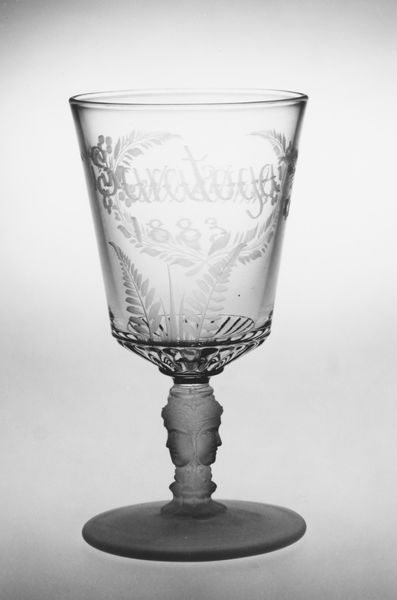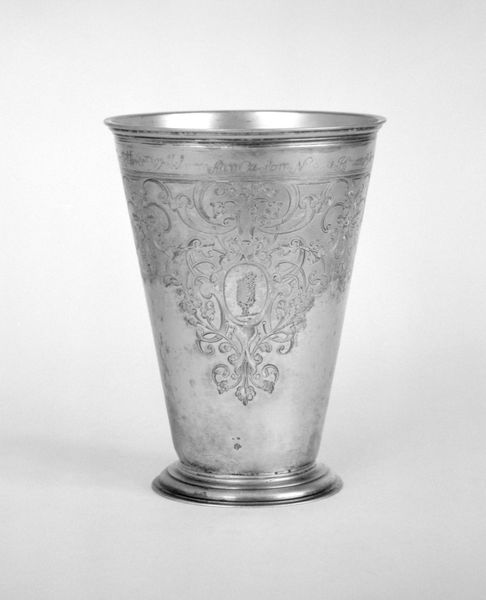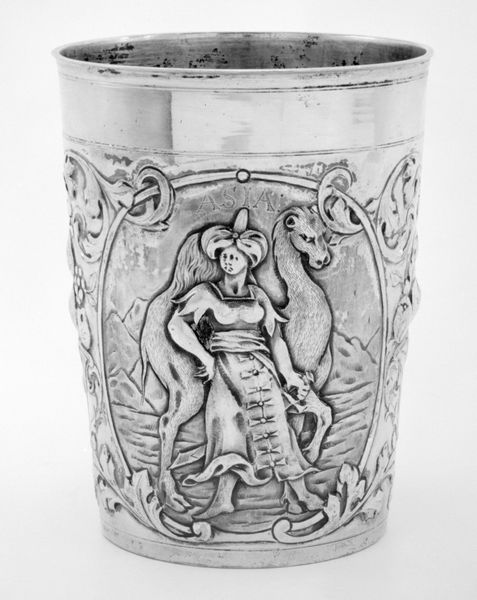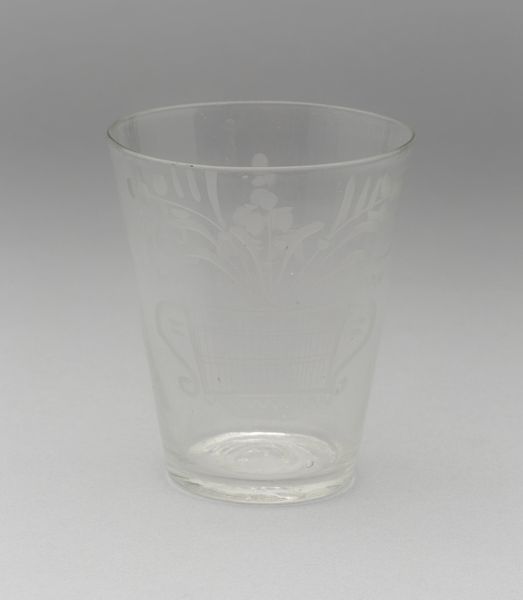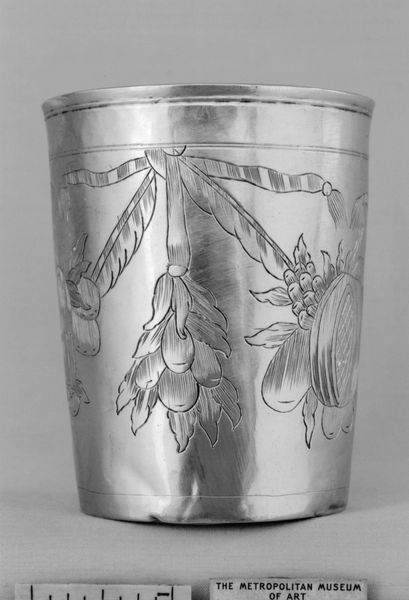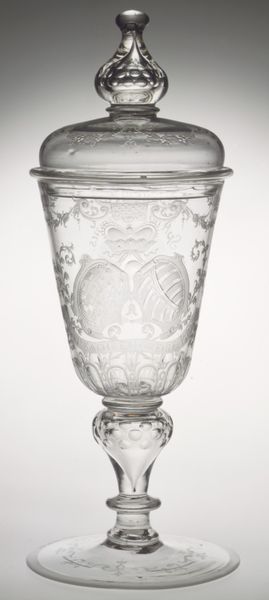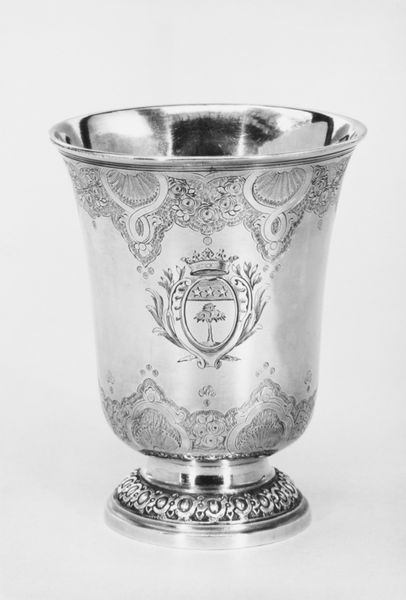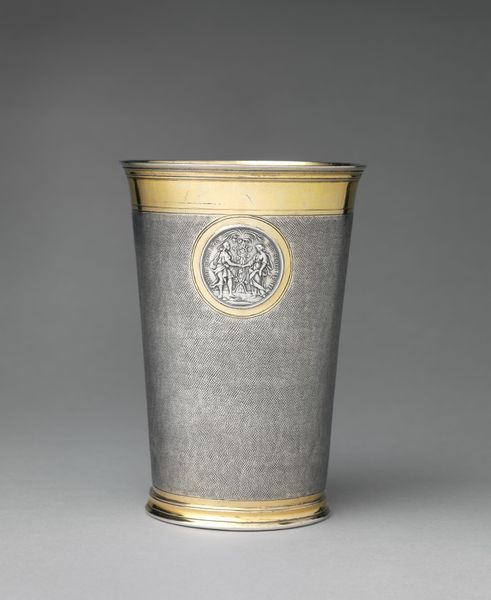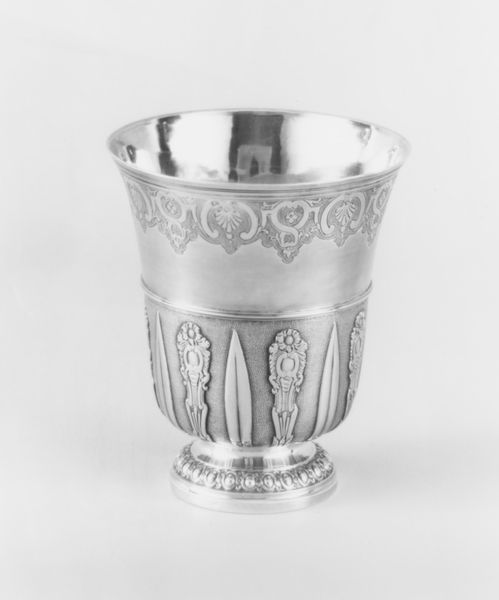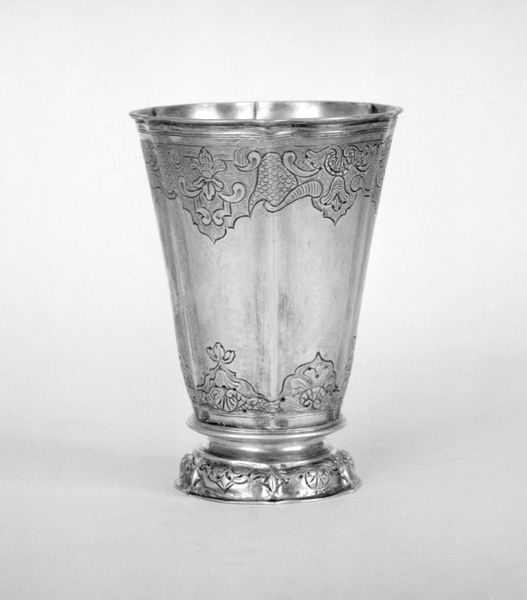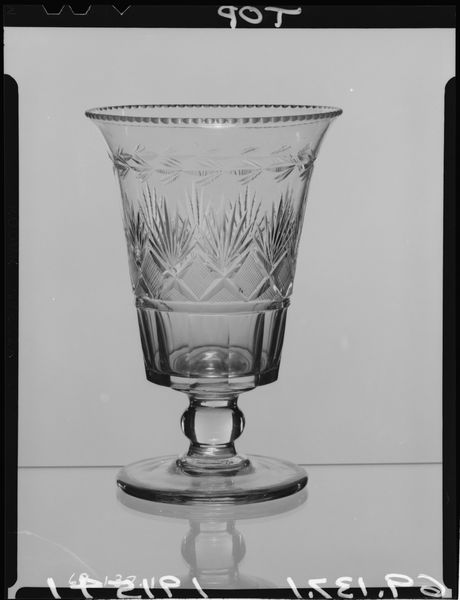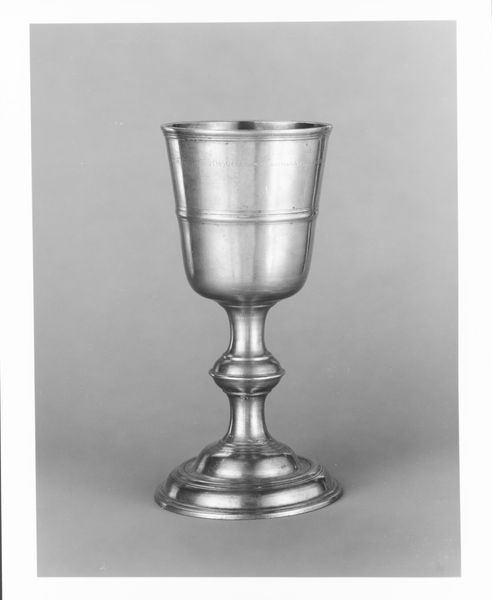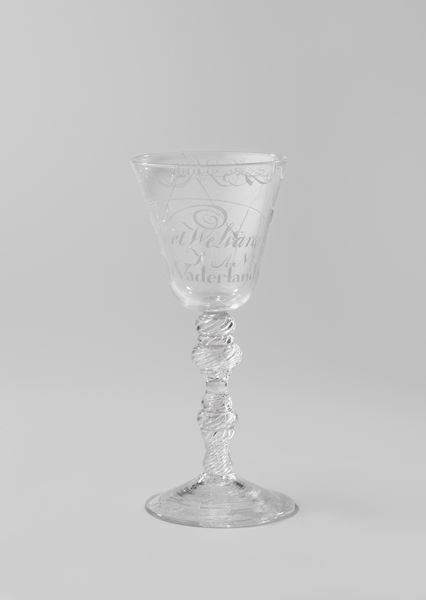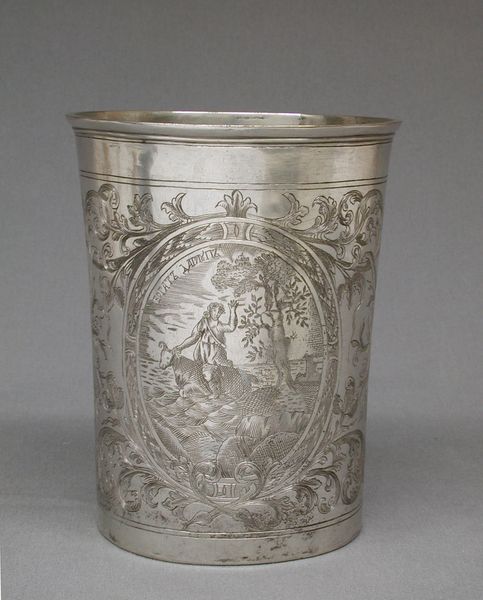
print, glass, sculpture, engraving
#
portrait
#
medieval
# print
#
old engraving style
#
figuration
#
glass
#
prop product design
#
sculpture
#
men
#
decorative-art
#
engraving
#
calligraphy
Dimensions: Height: 6 1/2 in. (16.5 cm)
Copyright: Public Domain
Editor: This is a beaker, dating from 1795 to 1825, currently held at the Metropolitan Museum of Art. It was created by J. G. Büchler. It appears to be made of glass, and it's decorated with engraving. What immediately strikes me is the way the figure and the text interact on the surface. What do you see in this piece from a formal perspective? Curator: I'm drawn to the interplay between the figuration and the ground. The engraver’s lines create a tension across the object. Observe how the crisp lines of the figure contrast with the more diffused texture of the calligraphy. The figure's solidity is challenged by the transparent nature of the glass itself, which undermines the illusion of depth. The verticality of the beaker is echoed by the standing figure, yet disrupted by the horizontal bands of text. Consider how that visual structure creates a dynamic within a static object. Editor: So, you're focusing on the relationship between the lines, the form of the glass itself, and how the figure interacts with the written words surrounding it. Does the monochrome palette play a role? Curator: Precisely. The limited tonal range necessitates a heightened focus on line and form. Every stroke of the engraving must carry significant weight, delineating form, texture, and space. Were this piece rendered in color, our perception would fundamentally shift; color would inherently become the dominant element. Its absence prompts a different reading. We are forced to contemplate the stark beauty of the monochrome design, almost skeletal in its essence. It heightens our sensitivity to the most subtle of gestures, the delicate modelling in the figure, the deliberate application of each stroke. Editor: That's really interesting; it reframes how I saw the work. Now the figure feels even more prominent and immediate despite being part of a functional object. Curator: Yes, it reveals a deeper understanding of the engraver's artistic intention to enhance a simple vessel through purely graphic, formal elements.
Comments
No comments
Be the first to comment and join the conversation on the ultimate creative platform.
